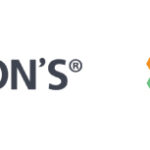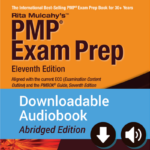One of the most important steps when coming up with a plan for your next project is identifying and analyzing risks. Whether you’re new to project management or you want to become a better project manager, understanding how to accurately determine where the risks lie on your projects can help ensure you’ll meet your goals with fewer, if any, setbacks along the way. We encourage you to find out how your lack of risk knowledge could be hurting your projects.
Identify and Analyze Risk in Projects
- What are Risks in Project Management?
- What Is Risk Management?
- The Benefits of Risk Management
- A Guide to Risk Identification and Analysis
- Risk Management Starts at the Planning Stage
What Are “Risks” in Project Management?
What is a risk, exactly? It’s any uncertainty that might affect your project in either a positive or a negative way, so a risk is really a potential threat or a potential opportunity.
A threat might delay your project, increase your costs, and reduce the level of quality that you deliver, as a few examples. An opportunity might improve project performance by doing things like reducing the cost, improving the schedule, or boosting the quality delivered.
Each project will have its own set of risks, so you shouldn’t assume that the risks involved in your last project will affect the one that you’re currently working on. In other words, every time you start a new project, it’s best to identify risks, analyze their possible impact on your project, and come up with plans to reduce negative risks or deal with them if they turn into actual problems, and take advantage of opportunities.
What Is Risk Management?
The purpose of risk management is to identify as many potential opportunities as possible, and to plan the project in such a way as to take advantage of them. Risk management also seeks to identify and eliminate as many threats as possible and reduce the negative impact of any remaining project threats. You can use risk management to prevent problems rather than dealing with them after they occur. You identify and assess risks, and then you plan accordingly.
So, you would start by identifying what could possibly go wrong throughout the duration of your project. Then, you would assess the probability of those risks manifesting into real problems, and you would figure out the impact that a risk would have on your project.
Next, you’d come up with strategies to eliminate or mitigate the effects of risks you’ve identified. Then, you’d create plans to resolve any issue that might arise so you’ll be able to act right away when necessary.
Finally, you’d perform ongoing risk assessments as the project progresses
The Benefits of Risk Management
A few of the main benefits associated with risk management are:
- Savings on project cost and time.
- Greater control over the project.
- Fewer hours spent dealing with problems because solutions have been planned to improve efficiency if a risk occurs.
- Minimizing scope creep (scope creep refers to uncontrolled changes or continuous growth in a project’s scope, and this can occur when the project isn’t properly defined, documented, or controlled).
A Guide to Risk Identification and Analysis
For the best results, take advantage of a systematic process for risk management like the one below.
Using this process, you can spend more time managing the creation of your project deliverables. And, if a risk were to occur, you’ll be able to quickly implement your planned risk responses (contingency and fallback plans), rather than determining a course of action when an issue has occurred. All in all, this allows for more proactive project management. You can avoid losing a lot of time and resources when issues do not become problems.
- Plan Risk Management: Determine how risk management will be done on your project, who will be involved in it, and what procedures will be used.
- Identify Risks: Determine specific risks by project, as well as by work package or activity.
- Perform Qualitative Risk Analysis: Subjectively analyze the probability and impact of each risk (for example, by using a scale of 1 to 10 for each risk). Also, prioritize the risks and categorize them. Decide what high ranking risks move on to the Quantitative Risk Analysis process. Categorizing may also help you find common causes for some- risks.
- Perform Quantitative Risk Analysis: Numerically estimate the cost and time impact of the high ranking risks from the Qualitative Analysis process. Expected Monetary Value (EMV, or % Probability x $ Impact) is the most common way of quantifying these risks. With these calculations you can create a risk reserve.
- Plan Risk Responses: Determine a course of action to reduce the overall risk to the project by decreasing the probability or impact of threats, while increasing the probability or impact of opportunities.
- Control Risks: Execute the risk response plan to manage risks and control overall project risk. Continually look for new risks and keep the risk management plan updated.
Risk Starts During the Planning Stage
Risk management begins during project planning. However, because risk assessment starts during planning doesn’t mean it stops there. Instead, you should continue performing risk analyses, including qualitative and quantitative analyses, during each stage of your project.
Ultimately, by using risk identification and analysis throughout a project, you can increase the odds that it will go smoothly, that you’ll stick to your budget and anticipated resource requirements, and that you’ll finish on schedule to impress and satisfy your stakeholders.
Build Your Risk Management Skills
The ability to effectively manage risk is an essential skill for professionals managing projects. You can learn more about how to clearly identify and prevent many of the problems commonly faced on projects using our Risk Management – Tricks of the Trade® for Project Managers – Third Edition practical and easy-to-use Course in a Book®. It’s essential reading for anyone looking for a clear explanation of risk management and how it fits into the project management process. RMC also offers our Risk Management eLearning course, and Learn things you can apply to your projects today!
Sources:
A whitepaper by RMC Learning Solutions, “6 Essential Elements to Effective Project Management.”
https://www.projectmanager.com/training/how-to-analyze-risks-project
https://www.clarizen.com/whats-risk-analysis-process-project-management/
https://www.pmis-consulting.com/example-project-risks-good-and-bad-practice/
- The PMP Exam 2023 - October 10, 2023
- CAPM Exam Format and Content - May 17, 2023
- Are You Ready for the PMP Exam? - May 9, 2023






